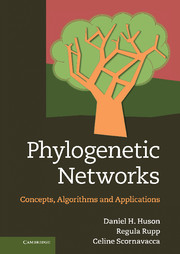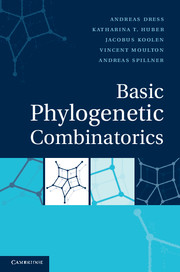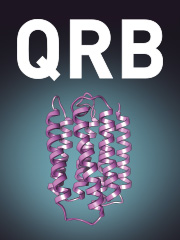Phylogenetic Networks
The evolutionary history of species is traditionally represented using a rooted phylogenetic tree. However, when reticulate events such as hybridization, horizontal gene transfer or recombination are believed to be involved, phylogenetic networks that can accommodate non-treelike evolution have an important role to play. This book provides the first interdisciplinary overview of phylogenetic networks. Beginning with a concise introduction to both phylogenetic trees and phylogenetic networks, the fundamental concepts and results are then presented for both rooted and unrooted phylogenetic networks. Current approaches and algorithms available for computing phylogenetic networks from different types of datasets are then discussed, accompanied by examples of their application to real biological datasets. The book also summarises the algorithms used for drawing phylogenetic networks, along with the existing software for their computation and evaluation. All datasets, examples and other additional information and links are available from the book's companion website at www.phylogenetic-networks.org.
- The first book to be published on phylogenetic networks
- Describes the most important algorithms and provides examples of the applications
- All datasets and examples discussed in the book are available from the book's companion website at: www.phylogenetic-networks.org
Reviews & endorsements
'Networks - rather than just trees - are fast becoming the essential tool for making sense of the complexities of evolution and conflicting signal[s] in genomic data. Phylogenetic Networks provides a long-overdue exposition of network-based methods, their possible uses and details on practical software. A detailed and unified treatment of the many different types of networks is complemented by a crisp synopsis of the underlying theory. Numerous example[s] and illustrations make the text easy to follow. This book will further transform the way biologists use genomic data to study evolution. The Tübingen group has led the development of phylogenetic network algorithms, and this book delivers a clear exposition for biologists bewildered by a plethora of recent methods, as well as for bioinformaticians aiming to develop the field further. It is essential reading for any scientist or student seeking to understand how genomic data can be used to represent and study the intricate 'web of life'.' Mike Steel, University of Canterbury
'This textbook, by one of the leaders of the field (Daniel H. Huson) and his co-authors, provides a mathematically rigorous introduction to one of the most exciting and beautiful research areas in computational biology: phylogenetic networks. The text is clear and provides all the necessary biology background; it should be accessible to graduate students (or upper-division undergraduates) in mathematics, computer science or statistics.' Tandy Warnow, University of Texas
'This wonderfully accessible book is by far the most thorough and up-to-date treatment of phylogenetic networks about. Many evolutionary processes in nature do not conform to the simple model of phylogenetic trees; examples are hybridizations, symbioses, and lateral gene transfer. The more we probe nature with genomics, the more significant and numerous these examples become, so there is a real need for using networks in phylogenetics. This volume is a must for researchers working with phylogenetic networks. It is for an advanced college audience. Beautifully organized and clearly written, it really fills a void.' Bill Martin, University of Düsseldorf
'… a brave and ambitious attempt to describe the field of phylogenetic networks anno 2012 from a motivated algorithmic perspective … a formidable achievement … It will deservedly become essential reading for both mathematically inclined researchers already working in the field and those looking for an easy way to enter the field. … an important milestone in the development of the field.' Systematic Biology
Product details
December 2010Hardback
9780521755962
376 pages
253 × 179 × 20 mm
0.89kg
189 b/w illus. 80 exercises
Available
Table of Contents
- Part I. Introduction:
- 1. Basics
- 2. Sequence alignment
- 3. Phylogenetic trees
- 4. Phylogenetic networks
- Part II. Theory:
- 5. Clusters and rooted phylogenetic networks
- 6. Splits and unrooted phylogenetic networks
- Part III. Algorithms and Applications:
- 7. Phylogenetic networks from clusters
- 8. Phylogenetic networks from splits
- 9. Phylogenetic networks from sequences
- 10. Phylogenetic networks from distances
- 11. Phylogenetic networks from trees
- 12. Phylogenetic networks from triplets or quartets
- 13. Drawing phylogenetic networks
- 14. Software
- Glossary
- Index.







